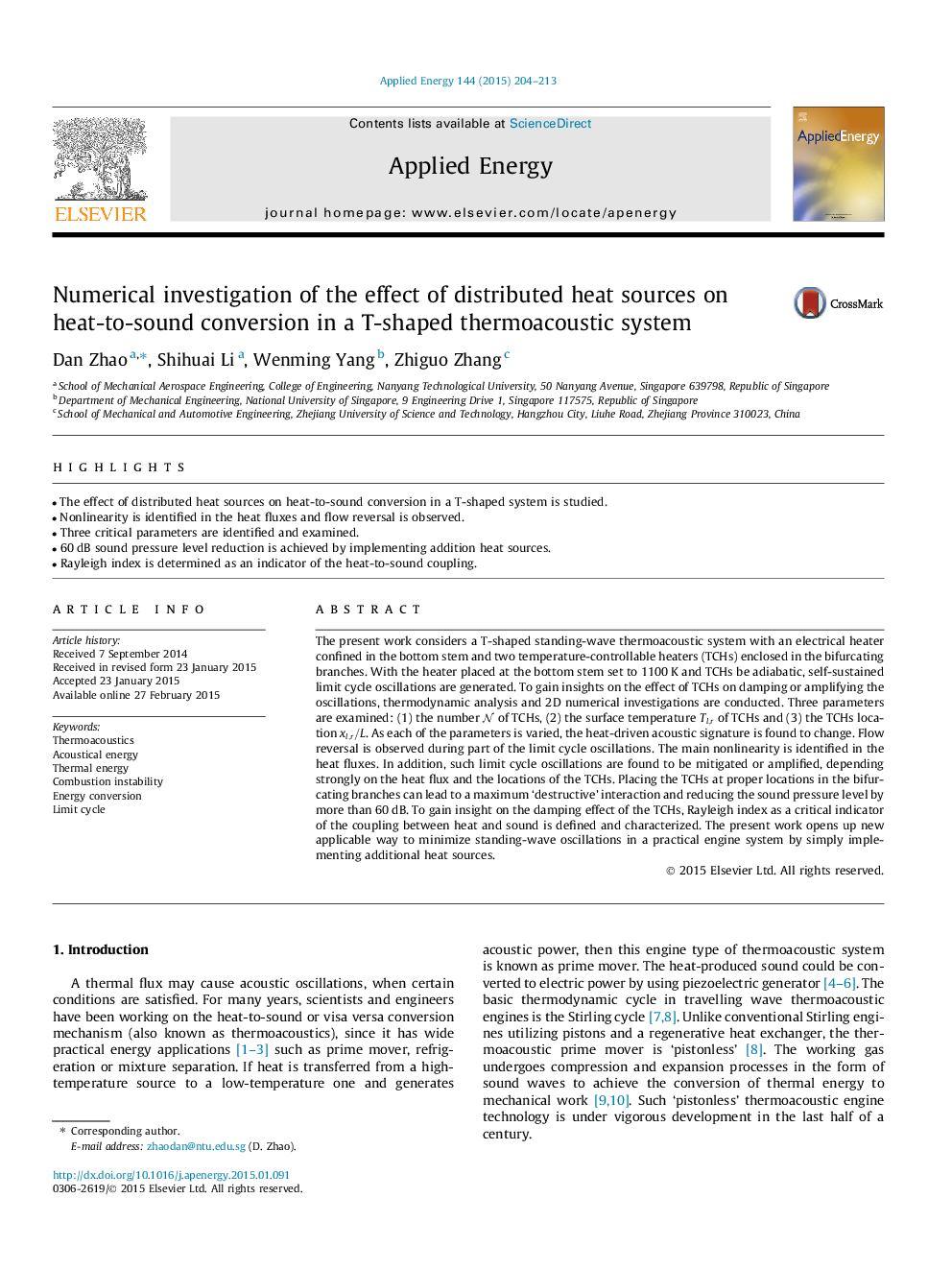| کد مقاله | کد نشریه | سال انتشار | مقاله انگلیسی | نسخه تمام متن |
|---|---|---|---|---|
| 242649 | 501885 | 2015 | 10 صفحه PDF | دانلود رایگان |

• The effect of distributed heat sources on heat-to-sound conversion in a T-shaped system is studied.
• Nonlinearity is identified in the heat fluxes and flow reversal is observed.
• Three critical parameters are identified and examined.
• 60 dB sound pressure level reduction is achieved by implementing addition heat sources.
• Rayleigh index is determined as an indicator of the heat-to-sound coupling.
The present work considers a T-shaped standing-wave thermoacoustic system with an electrical heater confined in the bottom stem and two temperature-controllable heaters (TCHs) enclosed in the bifurcating branches. With the heater placed at the bottom stem set to 1100 K and TCHs be adiabatic, self-sustained limit cycle oscillations are generated. To gain insights on the effect of TCHs on damping or amplifying the oscillations, thermodynamic analysis and 2D numerical investigations are conducted. Three parameters are examined: (1) the number NN of TCHs, (2) the surface temperature Tl,rTl,r of TCHs and (3) the TCHs location xl,r/Lxl,r/L. As each of the parameters is varied, the heat-driven acoustic signature is found to change. Flow reversal is observed during part of the limit cycle oscillations. The main nonlinearity is identified in the heat fluxes. In addition, such limit cycle oscillations are found to be mitigated or amplified, depending strongly on the heat flux and the locations of the TCHs. Placing the TCHs at proper locations in the bifurcating branches can lead to a maximum ‘destructive’ interaction and reducing the sound pressure level by more than 60 dB. To gain insight on the damping effect of the TCHs, Rayleigh index as a critical indicator of the coupling between heat and sound is defined and characterized. The present work opens up new applicable way to minimize standing-wave oscillations in a practical engine system by simply implementing additional heat sources.
Journal: Applied Energy - Volume 144, 15 April 2015, Pages 204–213